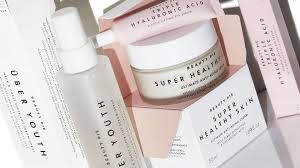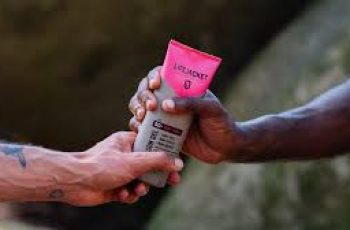
Can You Use Salicylic Acid While Breastfeeding?
New motherhood brings many challenges, and changes in your skin may be one of them. If you’re dealing with breakouts or acne while breastfeeding, you’re not alone — and you’re definitely not without options.
Many women who’ve struggled with acne before pregnancy already have trusted skincare products on hand. But once the baby arrives, a whole new question arises: Can you safely use salicylic acid while breastfeeding?
The short answer? Yes — with a few important precautions.
Let’s explore what salicylic acid does, how it works during breastfeeding, and what you need to know to keep both your skin and baby healthy.
Is Salicylic Acid Safe to Use While Breastfeeding?
Yes, topical use of salicylic acid is considered safe while breastfeeding. Because it’s applied to the skin in small amounts, it doesn’t absorb significantly into the bloodstream or affect breast milk.
However, high concentrations — like those found in oral medications or chemical peels — are not recommended.
The key is moderation and avoiding any areas near the nipple where your baby may come into contact with the product.
Understanding How Salicylic Acid Works
Salicylic acid is a beta hydroxy acid (BHA) known for its acne-fighting properties. It’s oil-soluble, which allows it to reach deep into pores and dissolve oil, dead skin cells, and bacteria.
That makes it perfect for treating:
Blackheads, Whiteheads, Hormonal acne, Clogged pores, Red, inflamed breakouts
Salicylic acid is also part of the aspirin family (salicylates), which is why it should be used cautiously and in low concentrations during pregnancy.
But after giving birth, topical use in small amounts is generally safe.
What Should You Know Before Using It?
Even though salicylic acid is considered safe for nursing mothers, there are a few important precautions to take:
Avoid applying near the chest area to prevent accidental ingestion by your baby.
Stick to low concentrations, typically 2% or less.
Use sparingly, and only on problem areas.
Wash hands thoroughly after application.
Before using any product — especially if it contains active ingredients — it’s wise to consult with your doctor or dermatologist to ensure it’s appropriate for you.
Can You Use Skincare Products While Breastfeeding?
Absolutely. In fact, taking care of your skin can be a helpful part of postpartum self-care.
That said, not all ingredients are safe while nursing. Some may pass through the bloodstream into breast milk or cause unwanted reactions for you or your baby.
Skincare Ingredients to Avoid While Breastfeeding
Some ingredients are not recommended while breastfeeding due to safety concerns or lack of research. These include:
Retinoids (Vitamin A derivatives), High-dose salicylic acid peels, Hydroquinone, Essential oils in high concentrations, Certain chemical sunscreens (like oxybenzone)
Retinoids, in particular, are known to absorb into the bloodstream and could pose risks to the baby, especially with prolonged use.
If you’re unsure about a product, always check the INCI (ingredient) list or talk to your healthcare provider.
Salicylic Acid May Appear Under Different Names
Salicylic acid and related compounds may be listed as:
Salicylate, Beta hydroxy acid (BHA), Willow bark extract, Sodium salicylate, Methyl salicylate
While not all of these are harmful in small doses, it’s best to recognize alternate names when scanning ingredient lists.
Are AHAs and BHAs Safe While Breastfeeding?
Alpha Hydroxy Acids (AHAs) like glycolic acid and lactic acid are generally considered safe during breastfeeding. Their larger molecule size prevents deep absorption into the skin.
Beta Hydroxy Acids (BHAs) — like salicylic acid — penetrate deeper and are more potent. But when used topically and in moderation, BHAs are also safe during breastfeeding.
To be cautious:
Avoid using chemical peels or masks with high percentages of BHA.
Stick to gentle cleansers, toners, or spot treatments that contain 0.5–2% salicylic acid.
How to Treat Acne While Breastfeeding
Fluctuating postpartum hormones can cause frustrating breakouts. Fortunately, there are safe and effective ways to treat acne while breastfeeding.
1. Use Safe Topical Ingredients
These are widely considered safe:
Salicylic acid (up to 2%), Azelaic acid, Benzoyl peroxide (in moderation), Niacinamide, Hyaluronic acid, Zinc
Apply topicals with care — avoid areas around the nipple and cleanse your skin gently but thoroughly.
2. Try Light Therapy
Red and blue LED light therapy can effectively treat acne without using any chemicals. These wavelengths target bacteria and inflammation, making it a great non-invasive option.
Ask a dermatologist or aesthetician about professional light therapy sessions, or consider an at-home FDA-cleared device.
3. Focus on Nutrition
Eating a balanced, nutrient-rich diet will benefit both your skin and your baby. Foods rich in vitamin A, C, and zinc support skin health naturally.
Try incorporating:
Sweet potatoes, Carrots, Spinach, Mangoes, Watermelon, Tomatoes
Cutting down on dairy and sugar may help reduce acne breakouts, but it’s okay to treat yourself occasionally. Balance is key.
4. Get Enough Rest (When You Can)
This might sound like a joke with a newborn, but rest really helps. Try these tips:
Limit blue light before bedtime.
Use a calming skincare mask or overnight treatment.
Ask for help so you can nap or recharge.
Make to-do lists to reduce nighttime stress.
Even short bursts of rest can help your skin recover and reduce inflammation.
How to Use Salicylic Acid Safely While Breastfeeding
Here’s how to safely use salicylic acid in your skincare routine as a nursing mother:
Choose products with no more than 2% salicylic acid.
Apply once per day, preferably in the evening.
Avoid applying on the chest, breasts, or near nipples.
Use a gentle cleanser first, then follow with a calming serum like niacinamide.
Always moisturize afterward to prevent dryness.
Don’t mix with retinoids or harsh exfoliants.
Recommended Salicylic Acid Products While Nursing
If you want to include salicylic acid in your postpartum routine, look for:
Low-concentration serums, Spot treatments for breakouts, Gel-based or foam cleansers, Toners with salicylic acid and hydrating agents
Avoid peels, masks, or layered products that increase the risk of irritation or absorption.
When Should You Avoid Salicylic Acid?
If your skin becomes:
Very dry, Red or inflamed, Sensitive to touch
… then it’s best to take a break from salicylic acid and consult with a professional.
Also, avoid using it if your baby is premature or has skin sensitivity — even though the risk of transfer is very low, caution is always a good idea.
When to See a Dermatologist
If your acne persists despite home treatment, or you’re unsure about product safety, book a visit with a dermatologist familiar with postpartum skin concerns.
They may suggest:
Topical antibiotics, Prescription-strength azelaic acid, Safe hydrating treatments
Always disclose that you’re breastfeeding so your doctor can tailor your treatment plan safely.
Final Thoughts: Is Salicylic Acid Safe During Breastfeeding?
Yes, salicylic acid can be safely used while breastfeeding, as long as it’s done correctly.
Stick to topical products, use them in moderation, and consult your doctor when in doubt.
Pairing salicylic acid with calming ingredients like niacinamide or hyaluronic acid can also help protect your skin’s barrier and avoid irritation.
Remember, your skin may take time to adjust post-pregnancy. Be kind to yourself. You’re doing amazing — both as a mom and as someone caring for their skin.
Have more questions about safe skincare during breastfeeding?
Come chat with us on Instagram or drop a comment below — we’re here to help you glow with confidence while caring for your little one.


